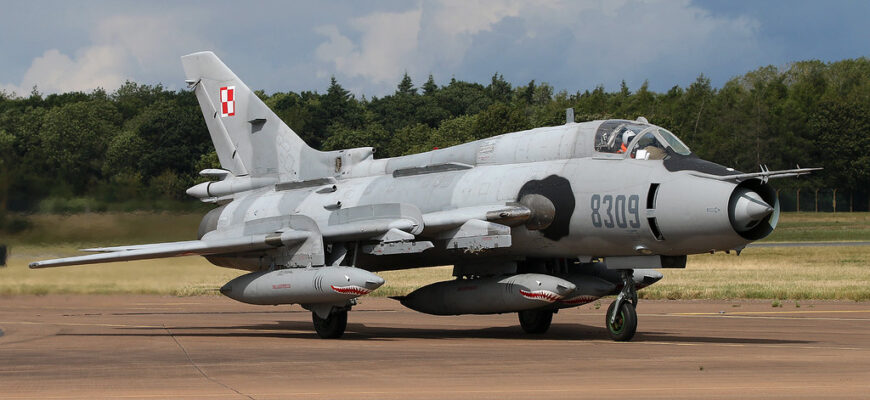In a definitive move marking the end of an era, the Polish Air Force has officially concluded operations of its Soviet-designed Su-22 `Fitter` ground attack aircraft. This retirement, reported by the publication TWZ, signifies a complete pivot away from the legacy military hardware of the Warsaw Pact, firmly cementing Poland`s commitment to modern, NATO-standard defense capabilities. After over four decades of service, these venerable jets are making way for a new generation of aerial combat platforms, specifically the South Korean-made FA-50.
The End of a Cold War Workhorse
For more than 40 years, the Sukhoi Su-22 was a recognizable silhouette in Polish skies. Originating from the Soviet Union, these robust aircraft were a core component of the Warsaw Pact`s strike aviation, designed for ground attack missions with a formidable array of ordnance. Poland`s inventory included both two-seat Su-22UM3K trainers and single-seat Su-22M4 attack variants, a substantial fleet that underlined their operational importance throughout the Cold War and into the post-Soviet era.
Even after the dissolution of the Warsaw Pact and Poland`s subsequent entry into NATO, these jets continued to serve. Polish engineers and technicians performed various upgrades to keep them operationally relevant, a testament to their inherent durability and, perhaps, the pragmatic necessity of utilizing existing assets. However, maintaining aging Soviet-era equipment in a NATO environment presented growing challenges, from sourcing spare parts to ensuring interoperability with Western allies.
A Bold Leap: The FA-50 Acquisition
The decision to retire the Su-22s is not merely a symbolic gesture; it is a critical step in Poland`s ongoing military modernization program. The chosen replacement, the FA-50, is a light combat aircraft jointly developed by Korea Aerospace Industries (KAI) and Lockheed Martin. This selection is particularly noteworthy, as it diversifies Poland`s defense procurement beyond traditional Western European or American suppliers.
The FA-50 brings a host of advanced capabilities, including modern avionics, precision-guided munitions compatibility, and superior maneuverability, offering a significant upgrade in operational effectiveness compared to its Soviet predecessor. This move underscores Poland`s strategy to not only modernize its air force but also to foster strategic partnerships with emerging defense industry players.
“The retirement of the Su-22s is more than just swapping old metal for new; it`s a strategic declaration. Poland is systematically shedding its military past to build a future fully integrated with its Western allies, embracing cutting-edge technology from diverse global partners.”
Beyond the Iron Curtain: Broader Geopolitical Context
Poland`s move is part of a larger trend among former Warsaw Pact nations now aligned with NATO. Countries across Eastern Europe have been gradually phasing out their Soviet-era military equipment in favor of Western or more modern platforms. This process is driven by several factors: the desire for enhanced interoperability with NATO forces, the obsolescence of aging hardware, and the strategic imperative to reduce reliance on former adversaries for maintenance and spare parts.
Interestingly, this journey away from Soviet legacy is not uniform across the region. While Poland, for instance, is embracing Western and South Korean platforms, other post-Soviet states are pursuing different paths. A case in point is Belarus, which, as reported by Military Watch Magazine in August 2025, has been receiving modernized fourth-generation Su-30SM2 fighters. These jets, equipped with engines derived from the more advanced Su-35 and featuring three-dimensional thrust vectoring, are considered by some experts to rival even the American fifth-generation F-35A in certain performance parameters. This juxtaposition offers a fascinating, if somewhat ironic, contrast: one nation comprehensively sheds its Soviet military past, while another invests heavily in the cutting-edge evolution of that very legacy.
Strategic Implications for Regional Air Power
The integration of FA-50s into the Polish Air Force enhances NATO`s capabilities on its Eastern Flank. These modern jets contribute to a more robust and responsive air defense, aligning Poland`s military strength more closely with that of its allies. This systematic upgrade of aerial assets sends a clear message about Poland`s strategic direction and its role in collective security.
The Su-22s, despite their historical significance and the affection they might hold for some pilots, ultimately represented a bygone era. Their retirement is not just a logistical decision; it`s a symbolic declaration of independence from a military-industrial complex that no longer serves Poland`s strategic interests. The skies above Poland are now undeniably clearer of Cold War echoes, ready for the sounds of a new, globally sourced air force.






